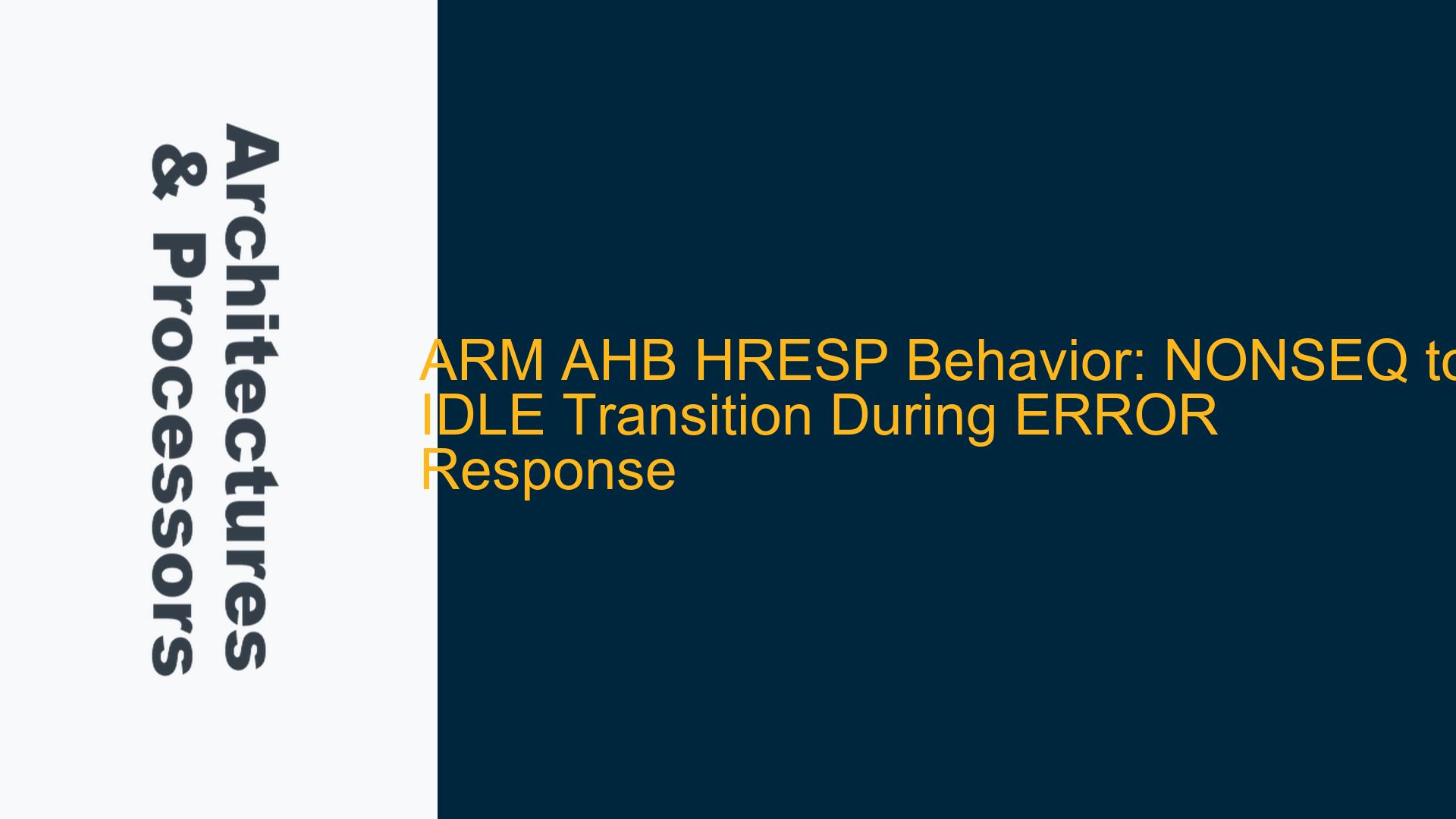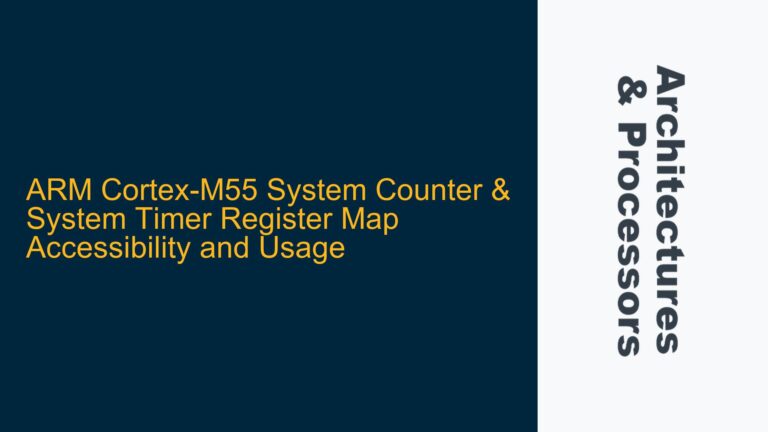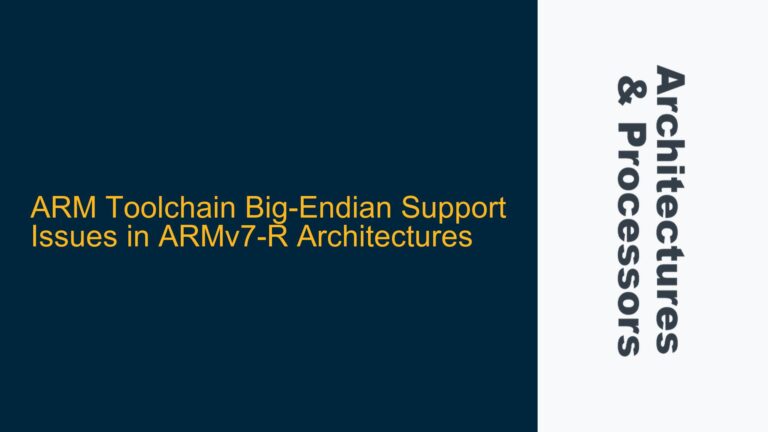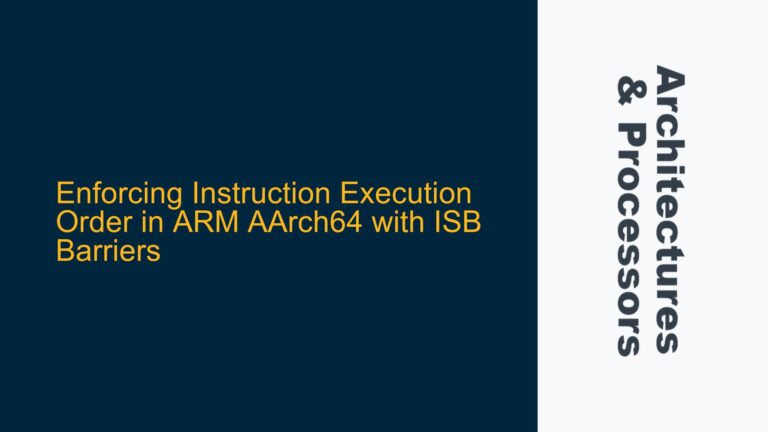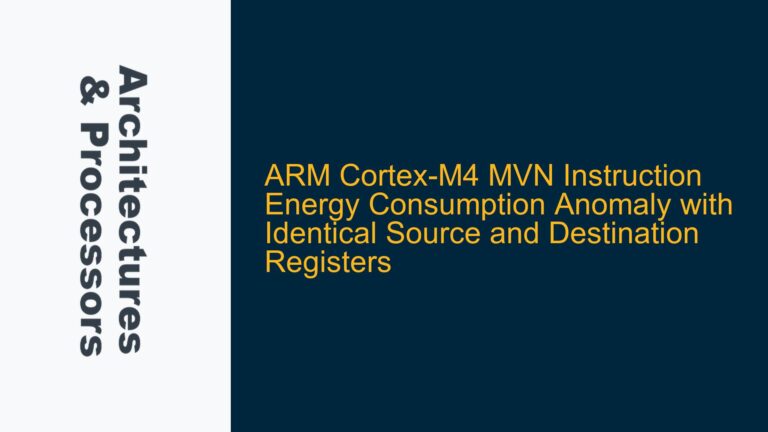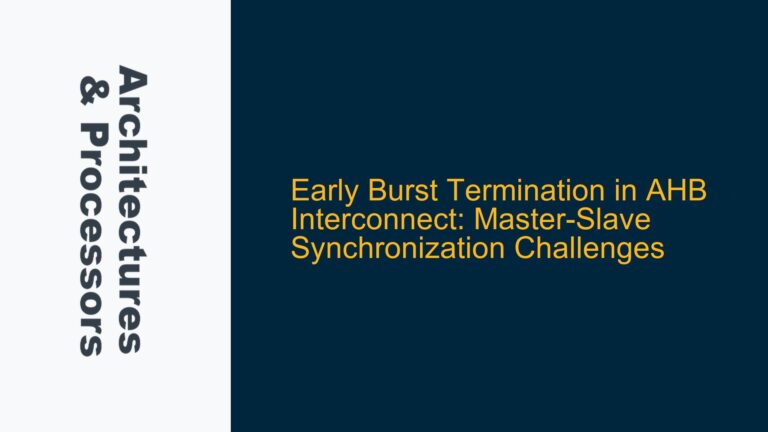HRESP Non-OKAY Response and HTRANS IDLE Transition Mechanics
The ARM Advanced High-performance Bus (AHB) protocol defines a robust mechanism for handling error responses (HRESP) during data transfers. A critical aspect of this protocol is the ability of the bus manager to transition the HTRANS signal from NONSEQ to IDLE when an HRESP non-OKAY response is received. This transition is essential for maintaining the integrity of the bus operations and ensuring that the system can recover gracefully from errors.
When a non-OKAY response is received, the bus manager has the authority to change the current HTRANS address phase value to IDLE. This action is not contingent on the specific peripheral targeted by the NONSEQ transfer. The protocol does not impose any restrictions based on the subordinate target; the transition to IDLE is universally applicable. This flexibility is crucial for the manager to manage the bus effectively, especially in complex systems with multiple peripherals.
The HRESP non-OKAY response is a two-cycle process. In the first cycle, HREADY is driven low, indicating that the bus is not ready to accept new transfers. During this cycle, the subordinate target does not sample the address phase inputs, including HTRANS and HADDR. This means that any values present on these signals during the first cycle of the HRESP non-OKAY response are effectively ignored by the subordinate. The low HREADY signal ensures that no erroneous sampling occurs, preserving the integrity of the bus operations.
In the second cycle of the HRESP non-OKAY response, HREADY is driven high, indicating that the bus is ready to proceed. At this point, the bus manager can transition HTRANS to IDLE. This transition is significant because it allows the manager to cancel the next indicated transfer address phase, thereby preserving the desired order of events. The transition to IDLE effectively nullifies the previous NONSEQ transfer, ensuring that the system can focus on resolving the error before proceeding with subsequent transfers.
The ability to transition HTRANS to IDLE during an HRESP non-OKAY response is a powerful tool for managing bus operations. It allows the bus manager to maintain control over the sequence of transfers, even in the presence of errors. This capability is particularly important in systems where the order of operations is critical, such as in real-time embedded systems or systems with strict timing requirements.
Implications of HTRANS IDLE Transition on Subordinate Targets
The transition of HTRANS from NONSEQ to IDLE during an HRESP non-OKAY response has significant implications for subordinate targets. When HTRANS is transitioned to IDLE, the subordinate targets no longer see the previous NONSEQ transfer as valid. Instead, they interpret the IDLE state as an indication that no transfer is currently being requested. This interpretation is crucial for ensuring that the subordinate targets do not attempt to process an invalid transfer, which could lead to system instability or data corruption.
The transition to IDLE also affects the sampling of the HADDR signal. When HTRANS is transitioned to IDLE, the HADDR signal may also change. The new HADDR value determines which subordinate target is selected for the IDLE transfer address phase. This change in HADDR is important because it ensures that the correct subordinate target is addressed during the IDLE state. The ability to change HADDR in conjunction with the transition to IDLE provides the bus manager with additional flexibility in managing bus operations.
The two-cycle nature of the HRESP non-OKAY response is designed to give the bus manager sufficient time to cancel the next indicated transfer address phase. This two-cycle process ensures that the manager can effectively manage the sequence of transfers, even in the presence of errors. The first cycle, with HREADY low, provides a window of opportunity for the manager to prepare for the transition to IDLE. The second cycle, with HREADY high, allows the manager to execute the transition and ensure that the subordinate targets correctly interpret the IDLE state.
The transition to IDLE is particularly important in systems where multiple peripherals are connected to the bus. In such systems, the ability to cancel a transfer to one peripheral while preserving the sequence of transfers to other peripherals is essential for maintaining system stability. The HRESP non-OKAY response mechanism, combined with the ability to transition HTRANS to IDLE, provides the bus manager with the tools needed to manage these complex interactions effectively.
Practical Considerations for Implementing HRESP Non-OKAY Response Handling
Implementing the HRESP non-OKAY response handling mechanism requires careful consideration of several practical factors. One of the key considerations is the timing of the HTRANS transition to IDLE. The transition must occur within the two-cycle HRESP non-OKAY response window to ensure that the subordinate targets correctly interpret the IDLE state. This timing requirement necessitates precise control over the bus manager’s logic to ensure that the transition is executed at the correct moment.
Another important consideration is the handling of the HADDR signal during the transition to IDLE. The bus manager must ensure that the HADDR signal is updated to reflect the correct subordinate target for the IDLE transfer address phase. This update must occur in conjunction with the transition to IDLE to ensure that the subordinate targets are correctly addressed. The bus manager’s logic must be designed to handle this update seamlessly, without introducing any delays or errors.
The bus manager must also consider the impact of the HRESP non-OKAY response on the overall system performance. The two-cycle HRESP non-OKAY response introduces a delay in the bus operations, which can affect the system’s ability to meet timing requirements. The bus manager must be designed to minimize this impact, ensuring that the system can continue to operate efficiently even in the presence of errors. This may involve optimizing the bus manager’s logic to reduce the latency associated with the HRESP non-OKAY response handling.
In addition to these technical considerations, the bus manager must also be designed to handle the potential for multiple HRESP non-OKAY responses occurring in quick succession. In systems with high error rates, the bus manager must be capable of handling multiple errors without compromising the system’s stability. This may involve implementing additional logic to prioritize error handling and ensure that the system can recover from errors quickly and efficiently.
Finally, the bus manager must be designed to provide robust error reporting and logging capabilities. The HRESP non-OKAY response mechanism provides valuable information about the occurrence of errors on the bus. The bus manager must be capable of capturing this information and making it available to the system for further analysis. This may involve implementing additional logic to log error events and provide detailed error reports to the system’s diagnostic tools.
In conclusion, the HRESP non-OKAY response handling mechanism is a critical aspect of the ARM AHB protocol. The ability to transition HTRANS to IDLE during an HRESP non-OKAY response provides the bus manager with the tools needed to manage bus operations effectively, even in the presence of errors. Implementing this mechanism requires careful consideration of several practical factors, including timing, HADDR handling, system performance, and error reporting. By addressing these considerations, designers can ensure that their systems are capable of handling errors gracefully and maintaining stable and efficient operation.
